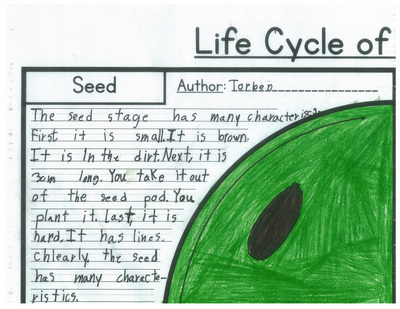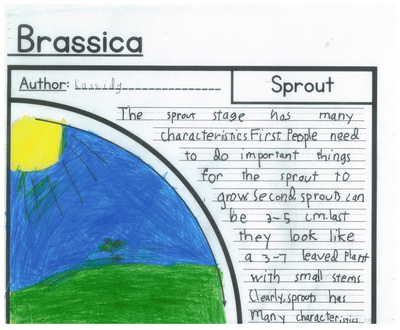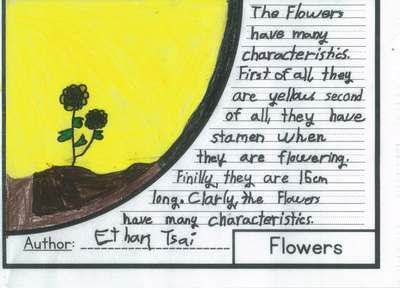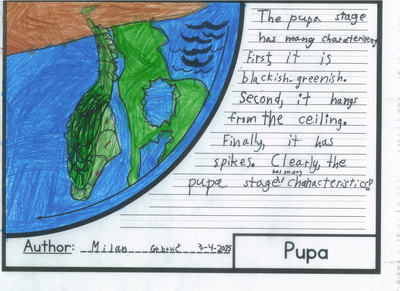Overview
I teach to the Next Generation Science Standards. In all of the schools where I have worked, I have primarily used the FOSS curriculum.
Next Generation Science Standards
Second GradeMatter and Its Interactions
|
|
Life Cycle Diagram Exemplars
At the conclusion of our life cycles unit, I ask students to work in small groups to write four paragraphs, explaining the stages of development with a corresponding visual, for one of the organisms we studied.
STEAM Fair
|
During the 2014-2015 school year, a classroom parent, who is also a teacher with Science is Elementary, facilitated a scientific investigation about the size and shape of seeds in which students created paper copter models and measured the time it took them to fall to the ground from the same height. Students shared their findings at our yearly STEAM Fair.
|
|





